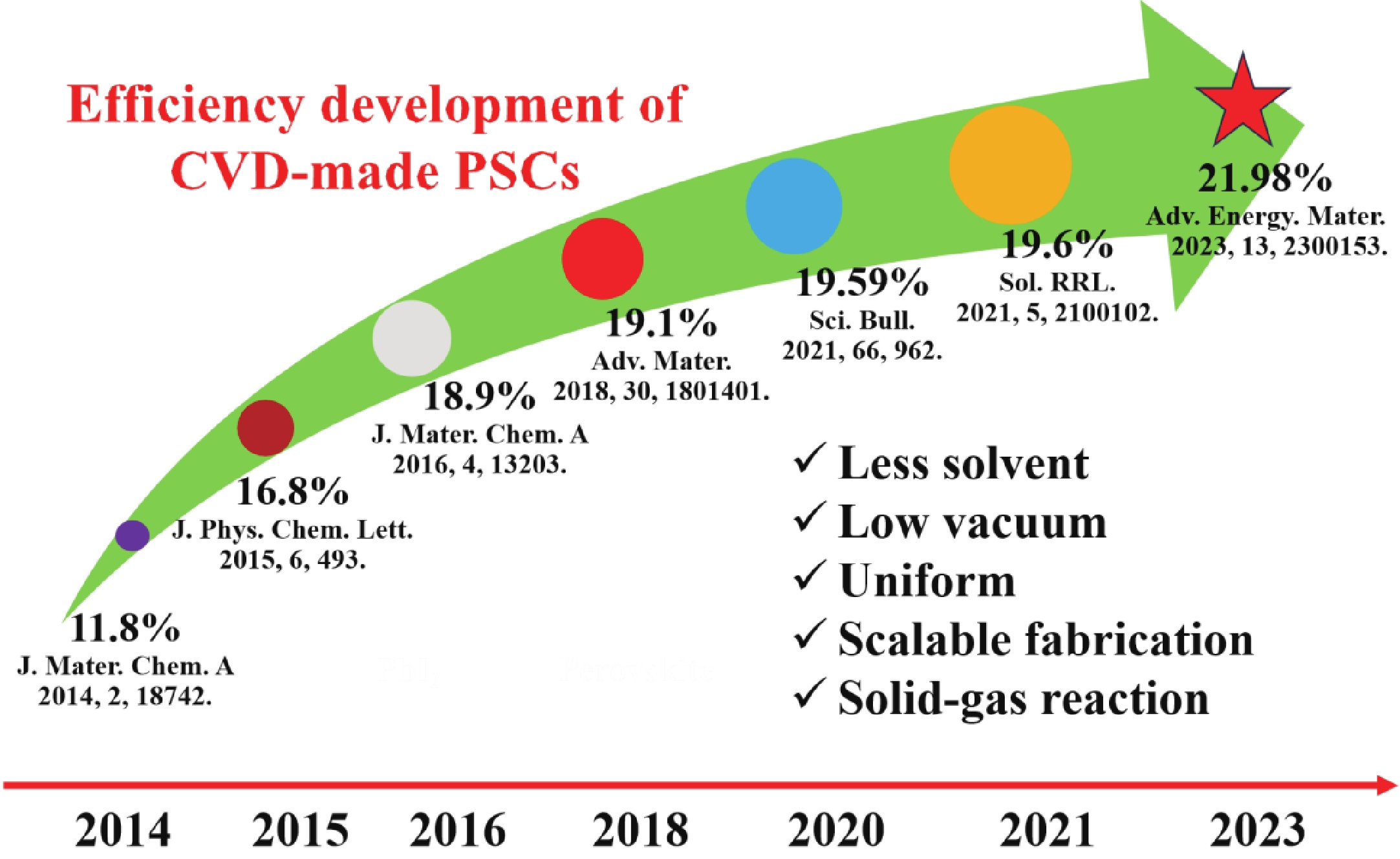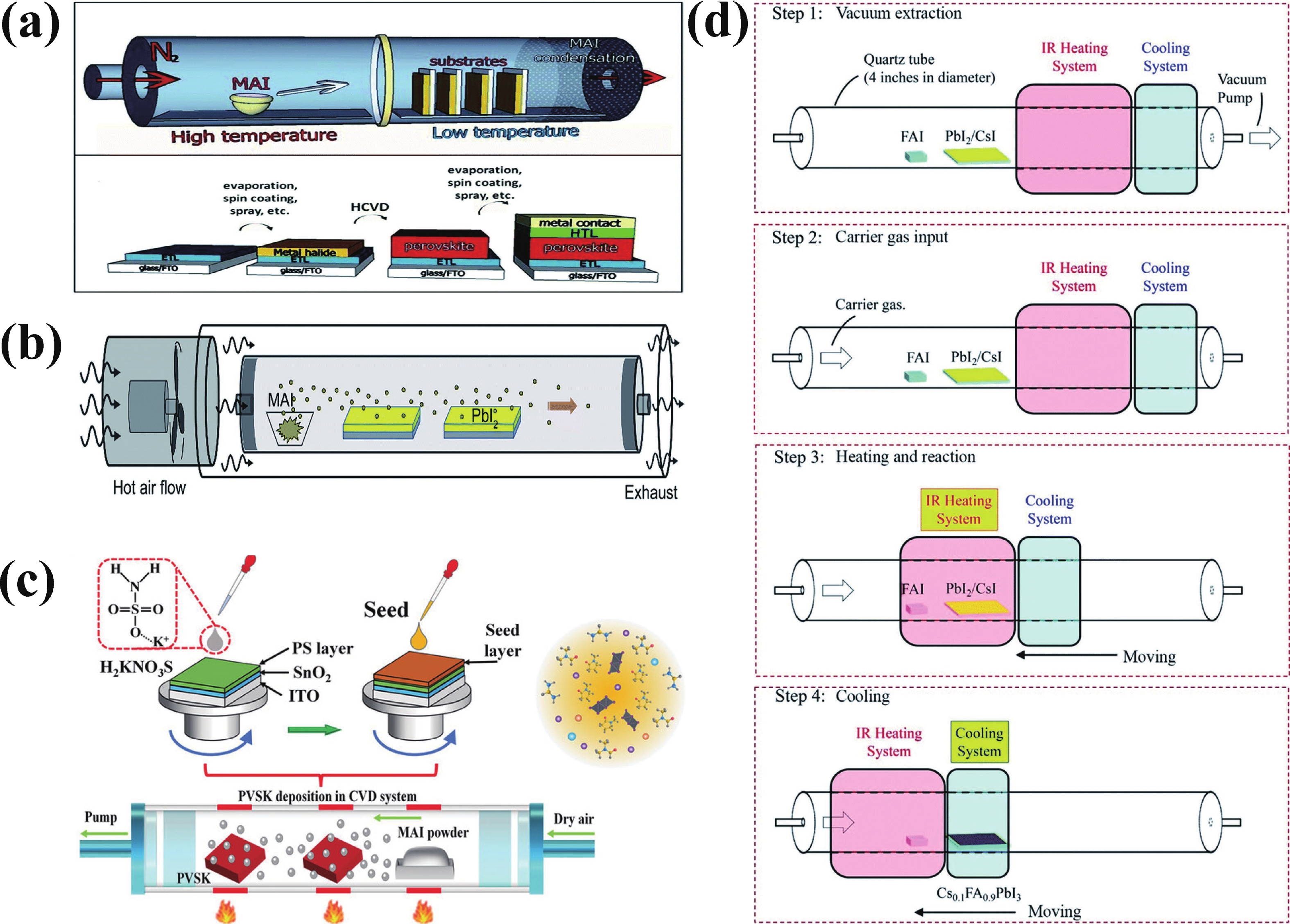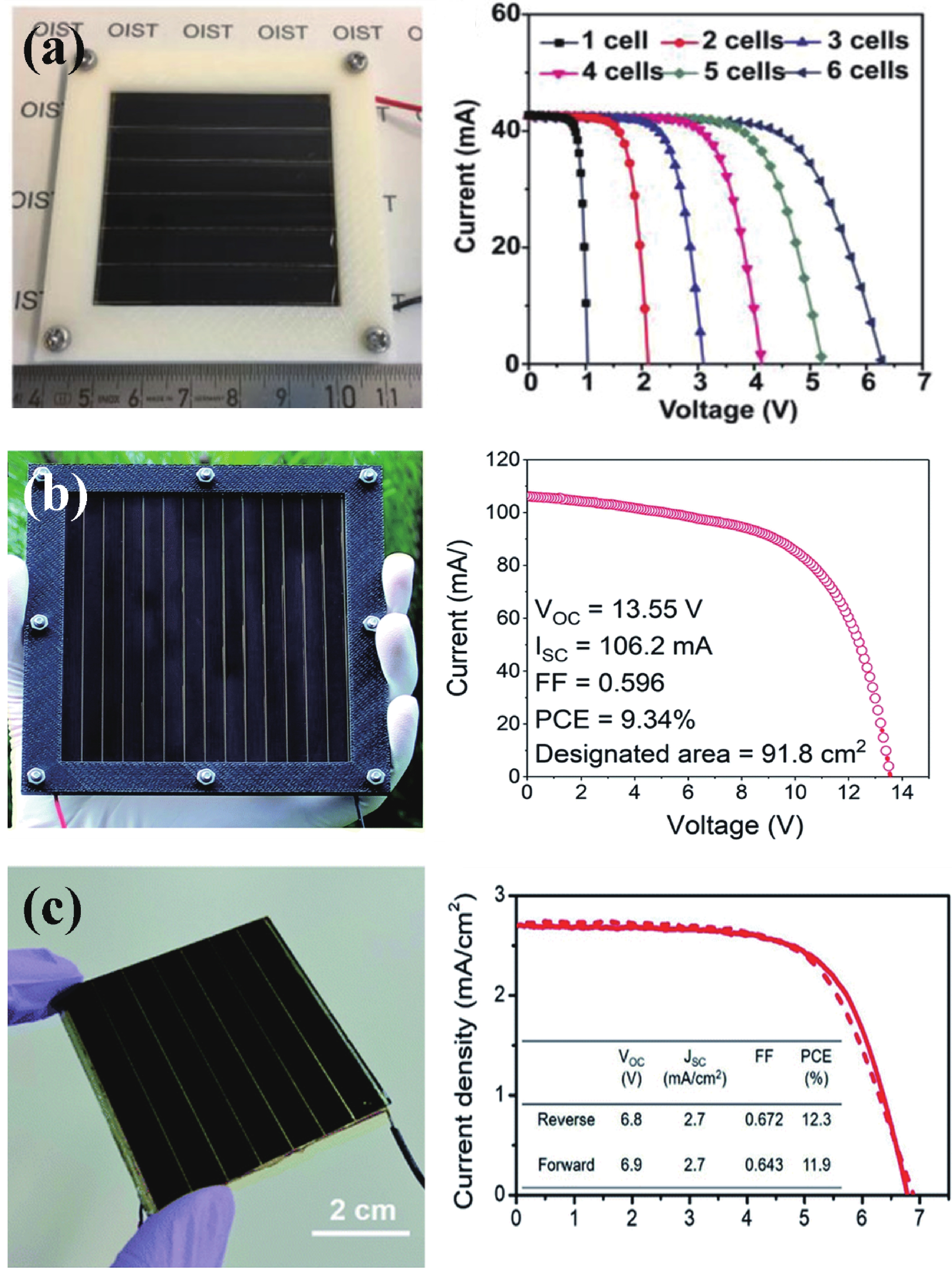| Citation: |
Zhihao Tao, Yuxuan Song, Baochang Wang, Guoqing Tong, Liming Ding. Chemical vapor deposition for perovskite solar cells and modules[J]. Journal of Semiconductors, 2024, 45(4): 040201. doi: 10.1088/1674-4926/45/4/040201
Z H Tao, Y X Song, B C Wang, G Q Tong, L M Ding. Chemical vapor deposition for perovskite solar cells and modules[J]. J. Semicond, 2024, 45(4): 040201. doi: 10.1088/1674-4926/45/4/040201
Export: BibTex EndNote
|
Chemical vapor deposition for perovskite solar cells and modules
doi: 10.1088/1674-4926/45/4/040201
More Information-
References
[1] Zhang H, Park N. Towards sustainability with self-healing and recyclable perovskite solar cells. eScience, 2022, 2, 567 doi: 10.1016/j.esci.2022.11.001[2] Nie T, Fang Z, Ren X, et al. Recent advances in wide-bandgap organic–inorganic halide perovskite solar cells and tandem application. Nano-Micro Lett, 2023, 15, 70 doi: 10.1007/s40820-023-01040-6[3] Zhang Y, Li Y. Interface materials for perovskite solar cells. Rare Met, 2021, 40, 2993 doi: 10.1007/s12598-020-01696-8[4] Guo Q, Wang C, Hayat T, et al. Recent advances in perovskite/organic integrated solar cells. Rare Met, 2021, 40, 2763 doi: 10.1007/s12598-020-01703-y[5] Mo Y, Wang C, Zheng X, et al. Nitrogen-doped tin oxide electron transport layer for stable perovskite solar cells with efficiency over 23%. Interdiscip Mater, 2022, 1, 309 doi: 10.1002/idm2.12022[6] Zhang L, Li H, Zhang K, et al. Major strategies for improving the performance of perovskite solar cells. iEnergy, 2023, 2, 172 doi: 10.23919/IEN.2023.0026[7] Zhang L, Pan X, Liu L, et al. Star perovskite materials. J Semicond, 2022, 43, 030203 doi: 10.1088/1674-4926/43/3/030203[8] https://www.nrel.gov/pv/cell-efficiency.html[9] Wang S, Wang P, Chen B, et al. Suppressed recombination for monolithic inorganic perovskite/silicon tandem solar cells with an approximate efficiency of 23%. eScience, 2022, 2, 339 doi: 10.1016/j.esci.2022.04.001[10] Kanda H, Mihailetchi V, Gueunier-Farret M, et al. Three-terminal perovskite/integrated back contact silicon tandem solar cells under low light intensity conditions. Interdiscip Mater, 2022, 1, 148 doi: 10.1002/idm2.12006[11] Zhang L, Mei L, Wang K, et al. Advances in the application of perovskite materials. Nano-Micro Lett, 2023, 15, 177 doi: 10.1007/s40820-023-01140-3[12] Tong G, Ono L, Liu Y, et al. Up-scalable fabrication of SnO2 with multifunctional interface for high performance perovskite solar modules. Nano-Micro Lett, 2021, 13, 155 doi: 10.1007/s40820-021-00675-7[13] Li H, Liu M, Li M, et al. Applications of vacuum vapor deposition for perovskite solar cells: A progress review. iEnergy, 2022, 1, 434 doi: 10.23919/IEN.2022.0053[14] Zheng G, Li L, Wang L, et al. The investigation of an amidine-based additive in the perovskite films and solar cells. J Semicond, 2017, 38, 014001 doi: 10.1088/1674-4926/38/1/014001[15] Lee J, Lee K, Kim K, et al. Vacuum-processed perovskite solar cells: materials and methods. Solar RRL, 2022, 6, 2200623 doi: 10.1002/solr.202200623[16] Tavakoli M, Gu L, Gao Y, et al. Fabrication of efficient planar perovskite solar cells using a one-step chemical vapor deposition method. Sci Rep, 2015, 5, 14083 doi: 10.1038/srep14083[17] Tong G, Geng X, Yu Y, et al. Rapid, stable and self-powered perovskite detectors via a fast chemical vapor deposition process. RSC Adv, 2017, 7, 18224 doi: 10.1039/C7RA01430A[18] Tong G, Jiang M, Son D, et al. 2D derivative phase induced growth of 3D all inorganic perovskite micro-nanowire array based photodetectors. Adv Funct Mater, 2020, 30, 2002526 doi: 10.1002/adfm.202002526[19] Ono L, Leyden M, Wang S, et al. Organometal halide perovskite thin films and solar cells by vapor deposition. J Mater Chem A, 2016, 4, 6693 doi: 10.1039/C5TA08963H[20] Yin J, Qu H, Cao J, et al. Vapor-assisted crystallization control toward high performance perovskite photovoltaics with over 18% efficiency in the ambient atmosphere. J Mater Chem A, 2016, 4, 13203 doi: 10.1039/C6TA04465D[21] Tong G, Zhang J, Bu T, et al. Holistic strategies lead to enhanced efficiency and stability of hybrid chemical vapor deposition based perovskite solar cells and modules. Adv Energy Mater, 2023, 13, 2300153 doi: 10.1002/aenm.202300153[22] Qiu L, He S, Liu Z, et al. Rapid hybrid chemical vapor deposition for efficient and hysteresis-free perovskite solar modules with an operation lifetime exceeding 800 hours. J Mater Chem A, 2020, 8, 23404 doi: 10.1039/D0TA09007G[23] Leyden M, Ono L, Raga S, et al. High performance perovskite solar cells by hybrid chemical vapor deposition. J Mater Chem A, 2014, 2, 18742 doi: 10.1039/C4TA04385E[24] Lou P, Liu Z, Xia W, et al. Uniform, stable, and efficient planar-heterojunction perovskite solar cells by facile low-pressure chemical vapor deposition under fully open-air conditions. ACS Appl Mater Interfaces, 2015, 7, 2708 doi: 10.1021/am5077588[25] Tong G, Li H, Li G, et al. Mixed cation perovskite solar cells by stack-sequence chemical vapor deposition with self-passivation and gradient absorption layer. Nano Energy, 2018, 48, 536 doi: 10.1016/j.nanoen.2018.04.012[26] Jiang Y, He S, Qiu L, et al. Perovskite solar cells by vapor deposition based and assisted methods. Appl Phys Rev, 2022, 9, 021305 doi: 10.1063/5.0085221[27] Qiu L, He S, Jiang Y, et al. Hybrid chemical vapor deposition enables scalable and stable Cs-FA mixed cation perovskite solar modules with a designated area of 91.8 cm2 approaching 10% efficiency. J Mater Chem A, 2019, 7, 6920 doi: 10.1039/C9TA00239A[28] Jiang Y, Remeika M, Hu Z, et al. Negligible-Pb-waste and upscalable perovskite deposition technology for high-operational-stability perovskite solar modules. Adv Energy Mater, 2019, 9, 1803047 doi: 10.1002/aenm.201803047[29] Qiu L, Liu Z, Ono L, et al. Scalable fabrication of stable high efficiency perovskite solar cells and modules utilizing room temperature sputtered SnO2 electron transport layer. Adv Funct Mater, 2018, 29, 1806779 doi: 10.1002/adfm.201806779[30] Li X, Sun J, Li B, et al. Managing excess PbI2 for efficient perovskite solar cells. J Semicond, 2023, 44, 080202 doi: 10.1088/1674-4926/44/8/080202[31] Zhang T, Yang M, Zhao Y, et al. Controllable sequential deposition of planar CH3NH3PbI3 perovskite films via adjustable volume expansion. Nano Lett, 2015, 15, 3959 doi: 10.1021/acs.nanolett.5b00843[32] Tumen-Ulzii G, Qin C, Klotz D, et al. Detrimental effect of unreacted PbI2 on the long-term stability of perovskite solar cells. Adv Mater, 2020, 32, 1905035 doi: 10.1002/adma.201905035[33] Tong G, Lan X, Song Z, et al. Surface-activation modified perovskite crystallization for improving photovoltaic performance. Mater Today Energy, 2017, 5, 173 doi: 10.1016/j.mtener.2017.06.003[34] Qiu L, He S, Jiang Y, et al. Metal halide perovskite solar cells by modified chemical vapor deposition. J Mater Chem A, 2021, 9, 22759 doi: 10.1039/D1TA06459B[35] Qiu L, Ono L, Jiang Y, et al. Engineering interface structure to improve efficiency and stability of organometal halide perovskite solar cells. J Phys Chem B, 2018, 122, 511 doi: 10.1021/acs.jpcb.7b03921 -
Proportional views






 DownLoad:
DownLoad:


















